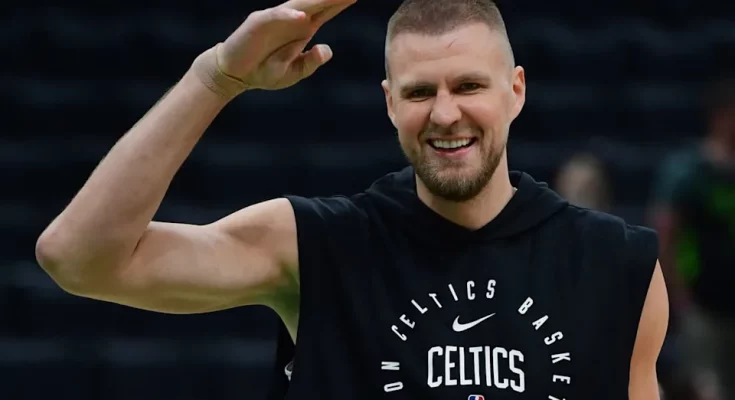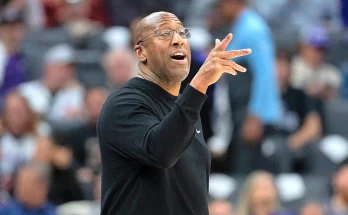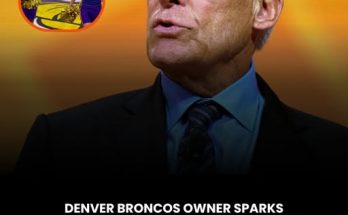The world of professional sports is no stranger to athletes seeking new challenges after retiring from their primary discipline, but few transitions are as dramatic as moving from the hardwood of the NBA to the octagon of the UFC. Recently, rumors and reports have begun swirling around a former star of both the Boston Celtics and the New York Knicks, hinting at a potential pivot to mixed martial arts. This prospect has generated an unprecedented buzz among fans of basketball, combat sports, and crossover athletics, raising questions about the feasibility, motivations, and potential impact of such a career shift. While athletes changing careers post-retirement is not unusual, the leap from professional basketball to professional fighting represents one of the most audacious and physically demanding transitions imaginable. It demands not only exceptional athleticism but also an entirely new set of skills, mental resilience, and a willingness to endure the rigors of a sport where a single misstep can have immediate consequences.
The star in question enjoyed a notable career in the NBA, earning accolades and recognition while donning the green of the Boston Celtics and the orange and blue of the New York Knicks. During their tenure in the league, they exhibited remarkable versatility, athleticism, and a competitive drive that often set them apart from their peers. Their ability to read the game, adapt under pressure, and perform at a high level in clutch situations made them a fan favorite and a respected figure among teammates and coaches alike. It is precisely these attributes that have fans speculating about their potential success in the UFC, as the mental toughness, strategic thinking, and dedication required in the NBA can, in theory, translate to a combat sports environment, albeit with substantial adaptation. Basketball, like mixed martial arts, is a sport of quick decisions, spatial awareness, and physical agility, all of which may provide a foundational advantage for someone venturing into fighting.
Reports indicate that this former NBA star has been quietly training in mixed martial arts for several months, possibly even years, behind the scenes. Sources close to the athlete suggest a regimen that combines Brazilian jiu-jitsu, Muay Thai, wrestling, and boxing—disciplines fundamental to modern MMA success. The rigorous nature of such training, especially for someone transitioning from basketball, highlights a commitment far beyond casual interest. Unlike other post-retirement ventures that leverage fame or public persona, a career in the UFC requires genuine skill development, physical conditioning, and a willingness to endure punishing training schedules. The intensity of these preparations has reportedly included sparring sessions with established fighters, endurance training, and learning complex fight strategies, signaling that the athlete is serious about competing at a professional level rather than merely using their name recognition for publicity.
The implications of this transition are multifaceted. From a marketing perspective, the UFC stands to benefit enormously from the crossover appeal of an NBA star entering the fighting world. Fans of the Celtics, Knicks, and basketball in general are likely to follow the athlete’s journey into MMA, potentially expanding the sport’s audience and bringing mainstream attention to high-profile bouts. This type of crossover is not without precedent; other athletes from traditional sports have attempted similar transitions with varying degrees of success, from former NFL players trying boxing to Olympic wrestlers entering MMA. However, the scale and visibility of an NBA star making such a move would represent a landmark moment in sports history, blending mainstream celebrity with elite combat sports in a way rarely seen before.
On the other hand, skeptics caution that the transition is fraught with challenges. Mixed martial arts is a physically punishing sport that demands not only strength and endurance but also precise technique, split-second decision-making under duress, and the ability to absorb significant punishment. While an NBA career develops cardiovascular fitness, explosiveness, and hand-eye coordination, it does not inherently prepare an athlete for the trauma of full-contact fighting. The risk of injury, especially when facing seasoned fighters, is considerable. Observers note that even highly trained combat athletes with years of experience in multiple disciplines can struggle when matched against elite opponents, making the prospect of success for someone transitioning from basketball uncertain. This reality underscores the monumental nature of the endeavor and highlights the courage—or perhaps audacity—required to pursue such a path.
Another intriguing dimension of this potential career shift lies in the athlete’s personal motivations. Many retired athletes seek new avenues to channel the competitive energy that defined their professional sports careers. For some, business ventures, coaching, or media roles provide a platform for continued engagement without the physical risks associated with competition. However, the decision to enter the UFC suggests a desire for a visceral, hands-on challenge that tests the limits of one’s physical and mental capacity. It also reflects a willingness to embrace reinvention, a hallmark of individuals who refuse to be defined solely by past achievements. This drive is likely fueled by both personal ambition and the allure of leaving a unique legacy in the sports world, demonstrating versatility and the pursuit of excellence across disciplines.
Fans and analysts alike are speculating on the timing and nature of the athlete’s UFC debut. While no official fight has been announced, industry insiders suggest that preliminary discussions with promoters may already be underway. The selection of opponents, weight class, and promotional strategy will be critical in shaping public perception and competitive prospects. Given the athlete’s stature and public profile, any debut would likely be highly publicized, potentially headlining a major UFC card. The narrative of a former NBA star stepping into the octagon carries inherent drama and appeal, tapping into broader cultural fascination with athletes who defy traditional boundaries and reinvent themselves in unexpected ways.
Moreover, this development raises broader questions about the evolving nature of professional sports careers and the increasingly fluid boundaries between disciplines. The notion of a singular sports identity is becoming less rigid, with athletes exploring new arenas, leveraging personal brands, and pursuing challenges beyond their original domain. This trend reflects larger societal shifts toward multifaceted careers and the pursuit of passion projects, demonstrating that athletic talent, discipline, and resilience can find expression in diverse and unexpected forms. The journey from NBA stardom to UFC competition embodies this philosophy, offering a case study in adaptability, ambition, and the redefinition of success.
As the sports world waits for confirmation, the conversation surrounding this potential transition has already ignited vibrant debate. Some view it as a natural extension of competitive spirit, a bold and inspiring example of an athlete refusing to rest on their laurels. Others remain skeptical, emphasizing the risks, the steep learning curve, and the uncertain outcomes. What is undeniable, however, is the symbolic power of the move: it challenges conventional assumptions about career trajectories, athletic limits, and the possibilities inherent in reinvention. For aspiring athletes, fans, and observers, it offers a narrative of courage, experimentation, and relentless pursuit of excellence, reminding us that even the most accomplished individuals can seek new heights.
In conclusion, the prospect of a former Boston Celtics and New York Knicks star pursuing a UFC career represents one of the most fascinating potential developments in sports today. It is a story of ambition, adaptability, and the intersection of two worlds that rarely overlap: professional basketball and mixed martial arts. The athlete’s preparation, motivation, and the public’s anticipation highlight the high stakes and cultural resonance of such a transition. Whether the endeavor culminates in victory, struggle, or simply the pursuit of a new challenge, it underscores a timeless truth about elite athletes: the drive to compete, innovate, and push boundaries rarely diminishes with age or retirement. As fans, analysts, and fellow competitors watch closely, this journey promises to redefine expectations, spark conversation, and perhaps, in time, inspire a new generation of athletes to embrace the unexpected and chase greatness beyond familiar arenas.



